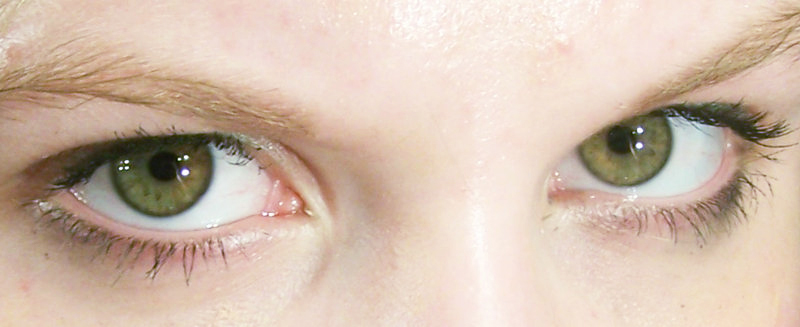
This is just speculation, hearsay and lack of real evidence. But I thought that I would use it as a topic today to post about. Mainly because this is something that people tell me all the time. In part, it is an attempt to make conversation, they want to connect with me.
Or hit on me.
It is usually the latter when I am out clubbing; regardless of how often I hear it, it always came across as suspicious. Though I am naturally a skeptical person; especially when the motivation behind the statement is only a pretense to get close.
About Genghis & Me
I should say, while history is of interest to me, Genghis and I have never gotten close. It would be a stretch to say that I know much about it at all, though I am interested in the region. Just not his exploits.
This will not be a history lesson, nor are all of my facts, checked and doubled checked. So take information revolving around him with a grain of salt.
Wikipedia has a lot of good primary sources for this information. The question of where a group of people came from, sadly, isn’t really a direct and certain answer, as it is unknown how the migrations of other peoples to the region exactly affected the genetic composition of the ethnicity.

Red Hair, Green Eyes
Having any of those traits was at the time of Genghis Khan uncommon. He came form Temujin, and there are few surviving accounts of what he actually looked like.
Some claim he had red hair and blue/green eyes, yet you should be skeptical.
Why?
There are Uyghur with these vary traits living there now.
Yet, Ugyhurs with red hair and/or very light eyes are generally a result of the fact that they were not the original inhabitants of Xinjiang, the area in which they mostly currently reside.
Tocharians held the area before the Uyghurs, and they were an Indo-European people who had a tendency towards light hair/eyes (see
Tarim mummies). The closest modern relatives to the Tocharians are of course the Afghans and Pashtuns, but in China the, Uyghurs would be most closely related to Tocharians, not the Mongols.
It’s not uncommon for Afghans to have light eyes and hair.
There’s no real evidence to suggest Genghis Khan had green eyes and red hair. It’s not an outlandish claim since there are a good number of Mongols with lighter hair and eyes but this gives people the wrong idea.

They infer that these traits must mean there are “white” Mongols. There aren’t. They just look like Asian people with green or blue eyes, just like how white people don’t look “Asian” just because they might have dark hair and eyes. They share a similar culture, language, and history with the other Indo-Iranian peoples in the region, which is important to note considering that Tocharians traditions would have otherwise been more prevalent.
Of course, there could be some modern day relationship between the two ethnicities, but the Tocharians, for the most part, did not live in that area, but more towards the Tarim Basin.
This is evident in genetic testing that has shown relations between the modern Uyghur peoples and Europeans, which can easily be read about here. So, in short, the Tocharians weren’t related directly to the Afghans, as they are Iranian. For more information on the Iranian migrations, look here.
Of course, I am only referring to “descendants” in terms of ancestors with the most effect on the modern population; if we want to go thousands of years back, there is evidence that the entire region of the Indian subcontinent was inhabited by peoples who shared a common, non-Indo-European genetic background. If you go back far enough, the Afghans becone Proto-Indo-Europeans, people of the Indus Valley Civilization, and the inhabitants of the BMAC, but on the other hand we all have diverse ancestral backgrounds, some untraceable, within us.
I hope this has given some clarification about what I was trying to say.
 When both parents have blue eyes, and you have green eyes. Technically blue and green are both recessive traits, so your parents are both carriers of the green eye color and it just happened to come out in you.
For comparison, my dad has blue eyes, mother brown. I have blue/grey eyes, my sister has blue and my brother has hazel. Because my dad has a recessive eye color, he doesn’t have the brown (dominant) trait, and a carrier of at least green, grey and hazel And my mother was a carrier of blue, grey and hazel as well.
Keep in mind that eye color, hair color, etc. are a bit more complicated than just dominant vs. recessive but this is how basic biology explains it.
Here in the US, where 1 in 6 people have blue eyes, having green eyes becomes rare.
When both parents have blue eyes, and you have green eyes. Technically blue and green are both recessive traits, so your parents are both carriers of the green eye color and it just happened to come out in you.
For comparison, my dad has blue eyes, mother brown. I have blue/grey eyes, my sister has blue and my brother has hazel. Because my dad has a recessive eye color, he doesn’t have the brown (dominant) trait, and a carrier of at least green, grey and hazel And my mother was a carrier of blue, grey and hazel as well.
Keep in mind that eye color, hair color, etc. are a bit more complicated than just dominant vs. recessive but this is how basic biology explains it.
Here in the US, where 1 in 6 people have blue eyes, having green eyes becomes rare.
 This is just speculation, hearsay and lack of real evidence. But I thought that I would use it as a topic today to post about. Mainly because this is something that people tell me all the time. In part, it is an attempt to make conversation, they want to connect with me.
Or hit on me.
It is usually the latter when I am out clubbing; regardless of how often I hear it, it always came across as suspicious. Though I am naturally a skeptical person; especially when the motivation behind the statement is only a pretense to get close.
This is just speculation, hearsay and lack of real evidence. But I thought that I would use it as a topic today to post about. Mainly because this is something that people tell me all the time. In part, it is an attempt to make conversation, they want to connect with me.
Or hit on me.
It is usually the latter when I am out clubbing; regardless of how often I hear it, it always came across as suspicious. Though I am naturally a skeptical person; especially when the motivation behind the statement is only a pretense to get close.


